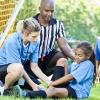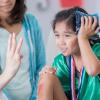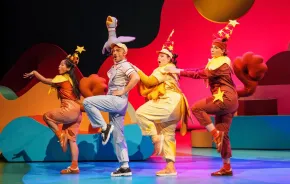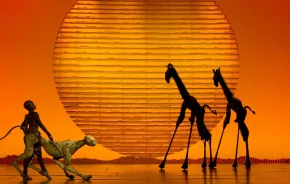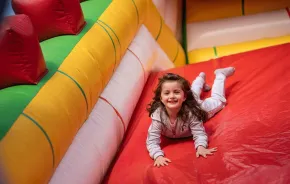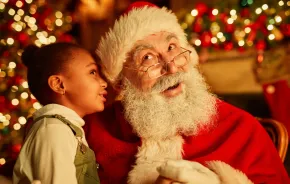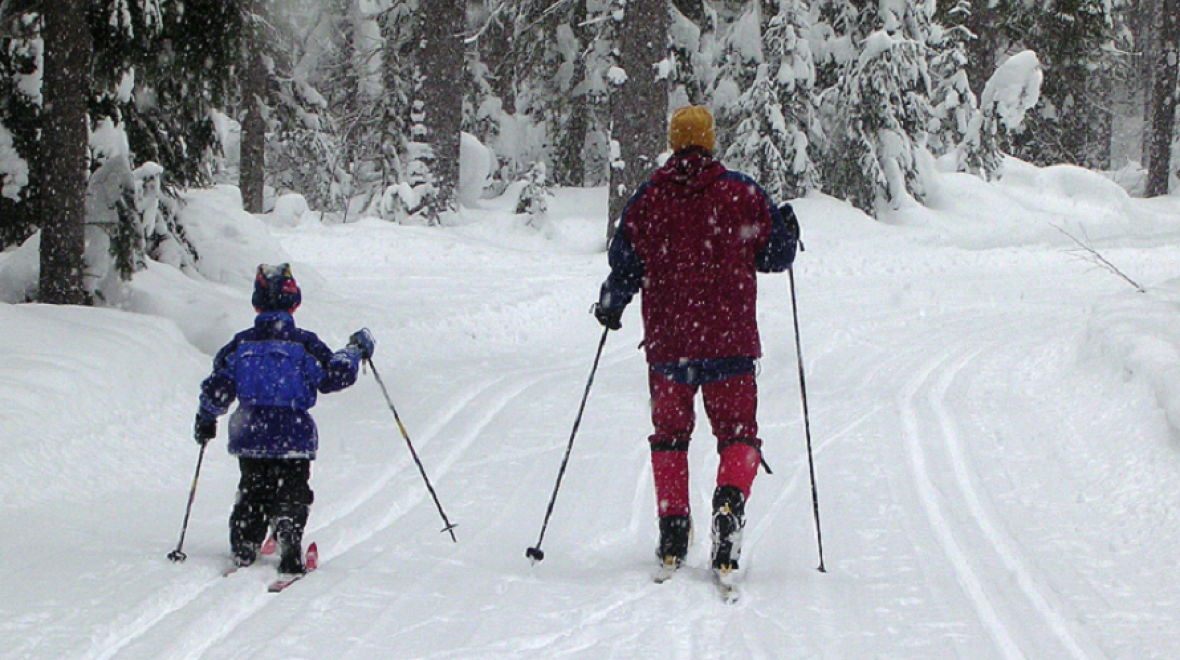
Photo:
Joanna Nesbit
When my family moved here years ago, my sister-in-law told me the key to surviving Seattle’s sodden, gray, seemingly endless winter: Get to the snow.
She was right. But when people ask, “Do you ski?” my answer is a “yes, but...” Because we don't downhill ski, as many families do, we cross-country ski, also called Nordic skiing. Here are two reasons you might consider it, too.
1. It’s a fraction of the cost of downhill skiing. A full-day adult trail pass at a Nordic center costs around $25 versus four times that much, or more, for a daily lift ticket at area downhill resorts. With an affordable Sno-Park and groomed trail pass that covers everyone in your car, you can ski at some great area trails.
2. It’s relatively easy to learn to cross-country ski. It’s great exercise and a sport you can do for a lifetime (not a lot of shredded cross-country ski knees). It gets you and your kids playing in nature. It teaches you skills that easily translate to alpine skiing. And, most important, it’s really, really fun for parents and kids alike (you can even do it with baby in tow — more on that later).
A quick primer on cross-country skiing
Most Nordic ski instructors recommend starting with classic cross-country skiing, where you ski in parallel set tracks with a kick-and-glide motion. (Cross-country skis are long and skinny. Unlike downhill skiing, your boot only attaches to the ski at the toe, which is why Nordic skiers are dubbed “free heelers.”) Skate skiing is just what it sounds like; skaters move in a kind of V-stride over smooth groomed snow (kind of like ice skating or inline skating). Skate skiing is very aerobic.
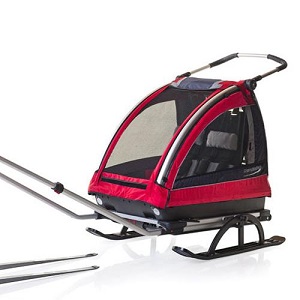 Got baby? You can still hit the snow with a pulk, a covered sled that attaches via lightweight bars to a waist belt (the ski equivalent of a bike trailer). The sleds range from about 10 to 20 pounds and can usually carry up to 50 to 80 pounds. Try borrowing or renting a pulk before you invest (see “getting geared up” below); it takes a few times out on flat terrain to get used to hauling your precious cargo.
Got baby? You can still hit the snow with a pulk, a covered sled that attaches via lightweight bars to a waist belt (the ski equivalent of a bike trailer). The sleds range from about 10 to 20 pounds and can usually carry up to 50 to 80 pounds. Try borrowing or renting a pulk before you invest (see “getting geared up” below); it takes a few times out on flat terrain to get used to hauling your precious cargo.
And keep the journey to an hour or less (aim for your child’s nap time if possible). If you haul older babies or toddlers, plan on breaking up your skiing with plenty of snowman-building sessions and snowball fights. Kids can take lessons at nearby mountains starting at age 4 (see "where to learn," below).
Speaking of breaking up your skiing, our family has found that treats go a long way to extending our ski outings (nutritionally incorrect, perhaps, but effective). A few winters back we took our kids to what many consider to be the Mecca of Pacific Northwest cross-country skiing, the Methow Valley. Sporting sunshine, dry snow and 120 miles of trails, it’s a true winter wonderland.
My husband and I relished the dramatic scenery and quiet, but our then 6- and 9-year-olds were getting antsy on a flat stretch of trail. Complaints mounted. Out came the Trader Joe’s gummy penguins: I flung handfuls of them as far as I could up the trail and essentially told the kids to “fetch.”
Chocolate plays a role as well; I always tote a slab of dark chocolate and break off pieces as needed for energy and motivation.
If you’re new to the sport, a lesson can save you from frustration and exhaustion. I grew up cross-country skiing the Chicago flatlands and vaguely rolling hills of southern Wisconsin. I never learned how to turn properly or navigate any hill steeper than a glorified bump. When we made the deliberate choice as a family to go Nordic over downhill skiing here, I took one private lesson: It made skiing thereafter more fun and less slog.
Where Seattle kids and families can learn to cross-country ski
The ski areas below offer lessons for kids and adults as well as daily or season rental gear packages. Adult lesson packages usually include instruction, rental and trail passes: for example, a one-hour new-to-Nordic group lesson package at Stevens Pass (including rental gear) runs $50–$60. If your kids are too young for a group lesson, ask about an all-family private session.
 The Summit at Snoqualmie has the closest and most comprehensive Nordic instruction (about an hour’s drive from Seattle), offering kids ages 4-6 four- or eight-week Saturday lessons (a program called Treasure Trails), kids ages 7–18 have an eight-week Saturday session. (Full disclosure: My kids have taken lessons through the Junior Nordic Program for several years and love it.) Beginners age 10–17 can also take a three-week EZ 2 Nordic class. Adult and kid private or group lessons (some multi-week too) at all levels.
The Summit at Snoqualmie has the closest and most comprehensive Nordic instruction (about an hour’s drive from Seattle), offering kids ages 4-6 four- or eight-week Saturday lessons (a program called Treasure Trails), kids ages 7–18 have an eight-week Saturday session. (Full disclosure: My kids have taken lessons through the Junior Nordic Program for several years and love it.) Beginners age 10–17 can also take a three-week EZ 2 Nordic class. Adult and kid private or group lessons (some multi-week too) at all levels.
The Summit has has roughly 50 kilometers of trails; Cold Creek trail is rolling and pretty (put on your skis after walking up the hill to the trailhead.) A flat field below the lodge is good for practicing, but can be crowded, especially with Saturday classes. More experienced skiers can take the lift to upper trails.
Stevens Pass Nordic Center, about two hours’ drive from Seattle, offers private and group day classes for all levels starting at age 5. Stevens has about 28 kilometers of trails, of which 9.25 kilometers are rated “easiest.” Benches along the Main Line trail (a good beginner choice) make a great snack stop on a sunny day. Bonus if you’ve got baby: Stevens rents pulks.
White Pass Nordic Center (just over two hours’ drive from Tacoma, some 40 miles west of Naches, Wash.) is within reach for a day trip; day group lessons starting at age 5 for all levels, privates too.
White Pass has some 18 kilometers of trails, gorgeous scenery (try the lake loop) and a warm-up Nordic yurt (plans are in the works to add more trail.
For a first outing, going to a Nordic center offers the advantage of one-stop shopping: renting gear on-site, having a lesson and a warm place to have a snack and cocoa après ski in the day lodges.
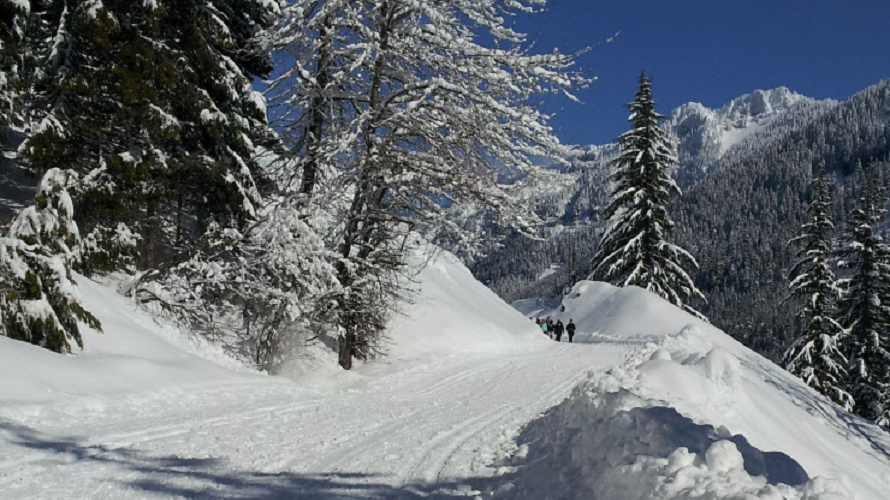
These trail systems, close to I-90, are great options away from the Nordic centers. Both Iron Horse and Cabin Creek require some combination of Sno-Park, groomed trail and/or Discover Pass permits:
- The Palouse to Cascades State Park Trail, previously called Iron Horse trail and a former railroad line, is ideal for beginners and families (perfect to practice pulling a pulk). Try the section from Hyak (exit 54 from I-90).
- Cabin Creek has more varied terrain, but plenty of beginner trails. Get there early on weekends.
- Suncadia in Cle Elum has 16 miles of trail open to the public at no cost (you’ll need to take off your skis to cross roads in parts.
- Farther afield, Leavenworth and the Methow Valley make great weekend trips with diverse terrain, rentals and classes available.
Tips for finding cross-country ski gear
1. It’s all about layers. Synthetic and wool are best: avoid cotton. In general dress lighter than you would for alpine skiing; you need more freedom to move. Bring a change of clothes, especially socks and gloves. If you’re taking baby in a pulk bundle them up; warm one-piece outerwear works best.
2. We use Camelbaks for hands-free water on the trail; get one with a pocket to stash lunch or snack.
3. REI rents Nordic gear for kids and adults from most of its Washington stores with daily and season rates. Bonus: A one-day rental fee at both outfitters really covers you for three days (they don’t count the pick-up or drop-off days). You can also try borrowing gear for kids from people in your community; try your neighborhood listserv, Buy Nothing group or PTA's Facebook group.
Editor's note: This article was originally published in 2013 and updated for 2017.





